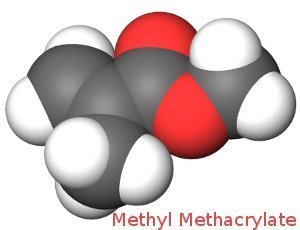Methyl Methacrylate
Methyl methacrylate has been used in plastic and resin manufacture for a number of years. It has been found to be significantly irritating to human eyes, skin, and mucous membranes. Exposure to methyl methacrylate has both short and long term effects and includes symptoms such as coughing, wheezing, chest tightness, and some neurological symptoms. The U.S. EPA does not consider the substance to be carcinogenic to humans.
What is Methyl Methacrylate Used For?
Methyl Methacrylate is primarily used in the production of plastics, resins, and plexiglass. These are then used to make lighting fixtures, advertising signs, displays, building panels, siding, molding, and skylights. The compound is also used to impregnate concrete in order to make it water-repellent and has been used in dentistry and medicine as a cement filler and to make prosthetic devices.
What Are the Potential Exposure Risks for Methyl Methacrylate?
People are primarily exposed to methyl methacrylate at work and fall victim to its poisonous effects via skin absorption and inhalation. The people most likely to be exposed to the substance are those who work in methyl methacrylate factories and those who consume water that it contaminated. Additional effects that exposure to the substance triggers include lethargy, light headedness, and a sense of the arms or legs feeling extremely heavy. In limited cases, extreme exposure to the substance has resulted in negative cardiovascular effects on humans.
Why the U.S. FDA Does Not Recommend Methyl Methacrylate Use
There are four primary reasons that the FDA does not recommend methyl methacrylate for industrial uses (including in nail products):
Reason #1 – Nail products made from methyl methacrylate do not adhere well to nail plates. To make the product(s) adhere, workers have to rough-up the surface of the nail, which weakens it.
Reason #2 – Nail enhancements made from methyl methacrylate are hard and rigid, which makes jammed or caught nails hard to remove. This can lead to serious damage.
Reason #3 – Methyl methacrylate products are difficult to remove. They have to be pried from nail plates and creates more damage.
Reason #4 – The U.S. FDA condemns the use of construction products made from the substance based on the large number of consumer complaints they have received since manufacturers started to use the substance in the 1970’s.


Comments - No Responses to “Methyl Methacrylate”
Sorry but comments are closed at this time.